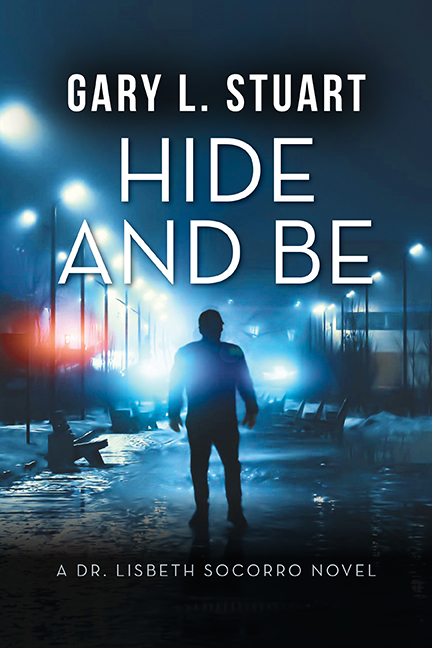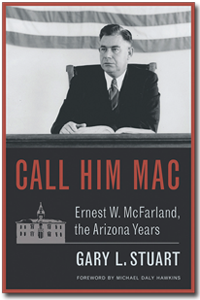Have you ever read a fairy tale? Written one? Got one? If not, it’s time you did. Bruno Bettlheim[1] knew about fairy tales and how useful they are in dealing with anxiety, as a child, grown-up, middle-ager, or late in life. His book, The Uses of Enchantment,[2] is aptly subtitled, The Meaning and Importance of Fairy Tales. While used extensively in books for children, fairy tales are never bound in time. Children delight in them the way adults thrive on mysteries.
“All children struggle with difficult emotions and internal conflicts such as jealousy or anger. When first experienced, a young child does not have the capacity to understand these concepts symbolically and as such to name them. Instead, they might feel a surge of uncomfortable emotions and one way to make sense of them is to visualize them as something bad or scary, often in the form of monsters or witches. This visual representation speaks to their imagination; it is developmentally appropriate. As such, by identifying with the struggles of, for example, Cinderella, Prince Cinders, or Snow White, and living through their stories, a child can process their own emotions and learn that their troubles can be resolved.”[3]
As adult mysteries require crimes, misdeeds of all kinds, and villains, fairy tales require whimsey and magic. “The whimsical wonder of fairy tales comes from their connection between nature, magic, and humans. The name ‘fairy’ tales is already intriguing due to its inclusion of a magical creature. Most, if not all fairy tales are set in a magical place such as an imaginary kingdom or an enchanted forest. The fictionality of the settings allows people to be easily immersed in a world that is not their own… Magic is often related to the animals in the tales, which can be shown in the form of animals speaking, turning into humans, or being half human and half animal.”[4]
Writing a fairy tale demands an understanding of fables and an inner sense of right and wrong. It often uses fables to tell the fairy tale. “A fable is a short story that teaches a lesson or conveys a moral. Animals are personified in fables, like talking turtles and wise spiders. Children tend to find this appealing, making the moral of the story more relevant. Fables are closely associated with fairy tales. While fairy tales can also feature talking animals, they don’t have to feature a solid moral or lesson as fables do. Fairy tales are more focused on entertainment, often with fanciful pops of magic and color.”[5]
The power of fairy tales, fables, and imagination is arguably best told in Cinderella.
“Once there was a hardworking girl with a wicked stepmother and a heart of gold. She got a makeover from a fairy godmother, scored a dance with a prince, and snagged a happily ever after in a pretty sweet castle. This story crossed the globe for thousands of years, winning hearts wherever it went. Although 17th-century French writer Charles Perrault recorded the most familiar version of ‘Cinderella’, the well-respected scholarly website Sur La Lune Fairy Tales estimates there may be as many as 1,500 traditional variants of the tale around the world. Those include “The Girl with the Rose Red Slippers” from ancient Egypt and a ninth-century Chinese version. The story has inspired countless modern retellings, including Walt Disney’s iconic 1950 cartoon, the blockbuster film Pretty Woman, the novel, and movie Ella Enchanted.”[6]
Unfortunately, there is a dark side to fairy tales. Some say fairy tales are inherently political. “Indeed, in many cases, authors deliberately chose fairy tale subjects in the hopes of making political points—sometimes subtly, sometimes obviously so, in the case of some satirical fairy tales. There are three categories of political fairy tales. (1) The expressly political: fairy tales and collections intended to accomplish some sort of political purpose—restore and celebrate German culture after the humiliation of the Napoleonic Wars, and argue for a unified Germany, for example, or stories that satirize current political structures. Examples include: the Grimm collections, Hans Christian Andersen’s “The Emperor’s New Clothes,” the Asbjørnsen and Moe collections, and the tales of Anne Isabella Thackeray Ritchie. (2) The subversively political: fairy tales used to obliquely criticize repressive regimes, using fairy tale structures and motifs, usually in an attempt to avoid imprisonment or execution. . . (3) The accidentally political: fairy tales that, although not necessarily written with any political intent in mind, still ended up either reflecting or reinforcing contemporary attitudes or, by simply being collected, serving as incidental comments on what cultural elements the collector/translator felt was worth sharing and presenting—itself political. Examples include many versions of Jack and the Beanstalk, some of Andersen’s tales, most of the Andrew Lang collections, and James Thurber’s The 13 Clocks.”[7]
“Jack Zipes has spent decades as a ‘scholarly scavenger,’ discovering forgotten fairy tales in libraries, flea markets, used bookstores, and internet searches, and he has introduced countless readers to these remarkable works and their authors. In Buried Treasures, Zipes describes his special passion for uncovering political fairy tales of the nineteenth and twentieth centuries, offers fascinating profiles of more than a dozen of their writers and illustrators, and shows why they deserve greater attention and appreciation.”[8]
“ONCE UPON A TIME, a brave and wealthy prince named Donald lived in a tall golden tower at the center of the world. In spite of his riches, Brave Donald was not happy. The noblemen in his kingdom, led by the vain courtier Failed Mitt, scorned him behind his back, only flattering him to serve their own ambitions. One day, Brave Donald decided to go to war with the noblemen. He defeated all who crossed his path: Lowly Rand, Poor Kasich, No Honor Lindsey, Low Energy Jeb, Little Marco, and Lyin’ Ted. He even brought down Crooked Hillary, who had cast a terrible spell on the Pathetic Democratic National Coven. Suddenly, Brave Donald was ruler of all the land. But the scribes of Fake News CNN and the Failing New York Times still did not show him respect. The heralds Crazy Mika, Dopey Karl, and Sleepy Eyes Chuck Todd began to conspire to turn the peasantry against him. This made Brave Donald Sad! He has always spoken in fairy tale language. With a rhetorical swish, he turns complicated figures into witches, bogeymen, and, often, pumpkins, and reduces opponents—including politicians, the media, and other national leaders—to their most simplistic.”[9]
Morality is something we should teach our children and our leaders. The fable, Pinocchio, is arguably the best example of using made-up characters to teach morality. “Geppetto was a poor carpenter who carved a puppet that became alive. He named him Pinocchio and sent him to school. One day Pinocchio joined a puppet show, but the puppet master wanted him for firewood. He begged to be spared and told him about his poor father. He was spared, and the puppet master gave him five gold coins for his father. Pinocchio learned how to be honest and tell the truth and eventually became a real boy.”
“Flannery O’Connor[10] spoke a simple but profound truth when she said that “a story is a way to say something that can’t be said any other way. … You tell a story because a statement would be inadequate.” The great fairy tales and fantasy stories capture the meaning of morality through vivid depictions of the struggle between good and evil, where characters must make difficult choices between right and wrong, or where heroes and villains contest the fate of imaginary worlds.”[11]
The literary world is awash with wonderful fairy tales that convey moral, social, or political lessons through skillful narrative and interesting characters. “Aesop’s fables are prime examples because they are the basis for so many of our contemporary moral stories. The still-popular tales have lived on for more than two millennia, exemplifying extraordinary power and longevity. . . The nature of this genre seems to invite evolution. Originally these deceptively simple stories were passed orally from generation to generation. As the printed word became more accessible, the tales became somewhat less mutable for a time. Today the images we see on the movie screen have firmly implanted themselves in our minds and have all but supplanted the originals. More significant than the changes themselves, however, is what the evolution of the fairy tale tells us about ourselves and our changing society.”[12]
“Wicked” is not a fairy tale. But it does share elements and a storyline with traditional storytelling. Its similarities include rites of passage, living in a forest, rites of passage a children who leave home to face evil.[13]
If readers are looking for the famous “moral of the story,” we should write fairy tales for them.
[1] Bruno Bettelheim was an Austrian-born psychologist, scholar, public intellectual and writer who spent most of his academic and clinical career in the United States. An early writer on autism, Bettelheim’s work focused on the education of emotionally disturbed children, as well as Freudian psychology more generally. https://en.wikipedia.org/wiki/Bruno_Bettelheim
[2] https://www.amazon.com/Uses-Enchantment-Meaning-Importance-Fairy/dp/0307739635/ref=sr_1_1?crid=1GUO7VR2H0907&keywords=the+uses+of+enchantment
[3] https://www.inspirethemind.org/post/the-magic-of-fairy-tales
[4] https://sites.uci.edu/newforum/2019/09/10/the-magic-of-fairy-tales/
[5] https://www.yourdictionary.com/articles/examples-fables
[6] https://www.rd.com/list/most-popular-fairy-tale-stories/#:~:text=Cinderella
[7] https://www.tor.com/2018/07/19/politics-and-fairy-tales-early-versions-of-the-three-little-pigs/
[8] https://press.princeton.edu/books/hardcover/9780691244730/buried-treasures
[9] “Inside the fairy tale mind of Trump” By Jon Allsop. September 27. 2017 https://www.cjr.org/special_report/trump-fairy-tale.php
[10] Mary Flannery O’Connor (March 25, 1925 – August 3, 1964) was an American novelist, short story writer and essayist. She wrote two novels and 31 short stories, as well as a number of reviews and commentaries. Her writing reflected her Roman Catholic faith and frequently examined questions of Catholicism-defined morality and ethics. Her posthumously compiled Complete Stories won the 1972 U.S. National Book Award for Fiction and has been the subject of enduring praise. https://en.wikipedia.org/wiki/Flannery_O%27Connor
[11] https://www.memoriapress.com/articles/fairy-tales-and-the-awakening-of-the-moral-imagination/
[12] https://www.vision.org/the-moral-of-the-story-fairy-tales-mirror-society-981
[13] https://www.focusfeatures.com/article/wickeds_gregory_maguire_on_what_turns_a_story_into_a_fairy_tal

I am an author and a part-time lawyer with a focus on ethics and professional discipline. I teach creative writing and ethics to law students at Arizona State University. Read my bio.
If you have an important story you want told, you can commission me to write it for you. Learn how.






 I am an author and a part-time lawyer with a focus on ethics and professional discipline. I teach creative writing and ethics to law students at Arizona State University.
I am an author and a part-time lawyer with a focus on ethics and professional discipline. I teach creative writing and ethics to law students at Arizona State University.  My latest novel is Hide & Be.
My latest novel is Hide & Be.  If you have an important story you want told, you can commission me to write it for you.
If you have an important story you want told, you can commission me to write it for you.